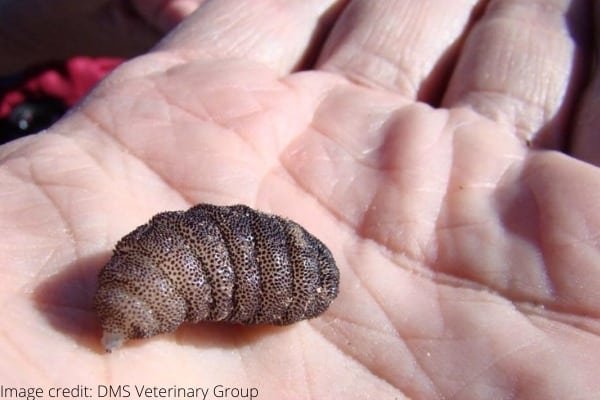
Imagine you’re lounging at a coffee shop, and we’re chatting about these remarkable worms. You’d be surprised to learn that wolf worms aren’t just about looking cute; their lifecycle and seasonality are influenced heavily by climate factors. So, let’s dive into how climate affects wolf worm seasonality and why it matters in the grander ecosystem picture.
What Are Wolf Worms?
Before we get into the nitty-gritty of seasonality, let’s clarify what wolf worms actually are. Wolf worms, often referred to as **larvae of the wolf fly**, are parasitic creatures that primarily target mammals like wolves, coyotes, and even domesticated pets. Picture this: a female wolf fly lays her eggs on the skin of a host. Once hatched, the larvae burrow into the host, feeding off its tissue. Sounds like a horror movie, right? But it’s a natural part of the ecosystem.
These larvae are typically found in areas where their hosts roam, so understanding their seasonality can give us important clues about wildlife health and behavior. Their lifecycle and the environmental conditions they thrive in can tell us a lot about their interactions with other species.
Seasonal Patterns of Wolf Worms
The **seasonality of wolf worms** varies significantly depending on the climate. In temperate regions, for example, wolf worms have a clear seasonal rhythm: they thrive primarily in the warmer months. This is when their hosts are most active and abundant. However, in harsher climates, like the Arctic, these patterns can be quite different.
During the late spring and summer, you’ll find wolf worms actively feeding. As temperatures drop in autumn and winter, these larvae may enter a dormancy stage to survive the cold. This cyclical behavior is vital not just for the worms themselves but also for the ecological balance, as it impacts predator-prey relationships.
Wolf Worms in Temperate Climates
In temperate climates, wolf worms typically emerge during spring and peak in summer. The warmer temperatures create an ideal environment for the larvae to grow and develop. It’s akin to how we enjoy picnics in the sun; everything seems to come alive in the warmth!
During this time, wolf flies are buzzing around, laying their eggs on suitable hosts. Here’s where it gets interesting: the presence of these larvae can help scientists monitor wildlife health. If wolf worms are thriving, it often indicates a healthy population of their host mammals. However, any significant drop in worm populations could suggest environmental stressors affecting these hosts.
Wolf Worms in Arctic Climates
Now, let’s take a look at colder regions, particularly the Arctic. Here’s the thing: wolf worms in Arctic climates have adapted their lifecycle to cope with extreme conditions. Rather than following a clear seasonal pattern, they might have a more erratic lifecycle. In some cases, they can remain dormant for extended periods, waiting for the right conditions to emerge.
With such a harsh climate, the availability of hosts fluctuates. During the brief summer months, when the snow melts, those few weeks of warmth see a surge in wolf worm activity. This fluctuating pattern highlights a fascinating adaptation to survive in one of Earth’s most challenging ecosystems.
Comparing Climate Impacts on Wolf Worms
Let’s break down how different climates shape wolf worm behavior. In temperate zones, the predictability of warmer months enables a consistent cycle of growth and feeding. On the other hand, Arctic climates force these worms to take a more unpredictable approach to survival.
– **Temperate Climates**:
– Consistent warm seasons lead to active feeding and reproduction
– Hosts are plentiful during summer months
– **Arctic Climates**:
– Dormancy during harsh winters
– Short bursts of activity during the brief summer
This comparison highlights the adaptability of wolf worms, showcasing the complexity of nature’s designs. It’s a dance with both the climate and the available wildlife.
Why Understanding Wolf Worm Seasonality Matters
You might be wondering, why is all this information about wolf worm seasonality important? Here’s the scoop: understanding these patterns can help inform broader ecological studies. By monitoring wolf worm populations, scientists can gain insights into the health of various animal species in their ecosystems.
Moreover, the seasonal changes can indicate shifts in climate patterns. For example, if wolf worms begin to emerge earlier in the year, it could signal changes in temperature and weather patterns, possibly hinting at climate change effects.
Wolf worms might not be the creatures that come to mind when you think about seasonal changes in nature, but their lifecycle tells us a lot about our ecosystems. Whether in temperate or Arctic climates, these remarkable little worms demonstrate the intricate dance of life. Understanding their behavior not only satisfies our curiosity but also enhances our comprehension of environmental health.
So, the next time you hear about wolf worms, you can impress your friends with your knowledge of how climate affects their seasonality. It’s not just a story of survival; it’s a glimpse into the complex web of life on our planet.
